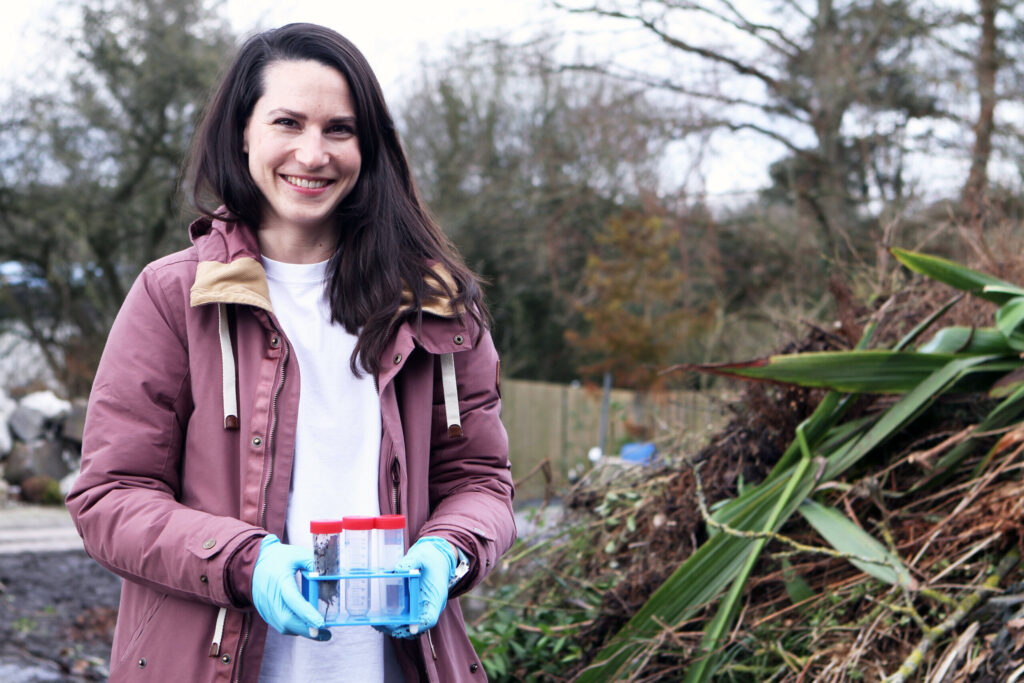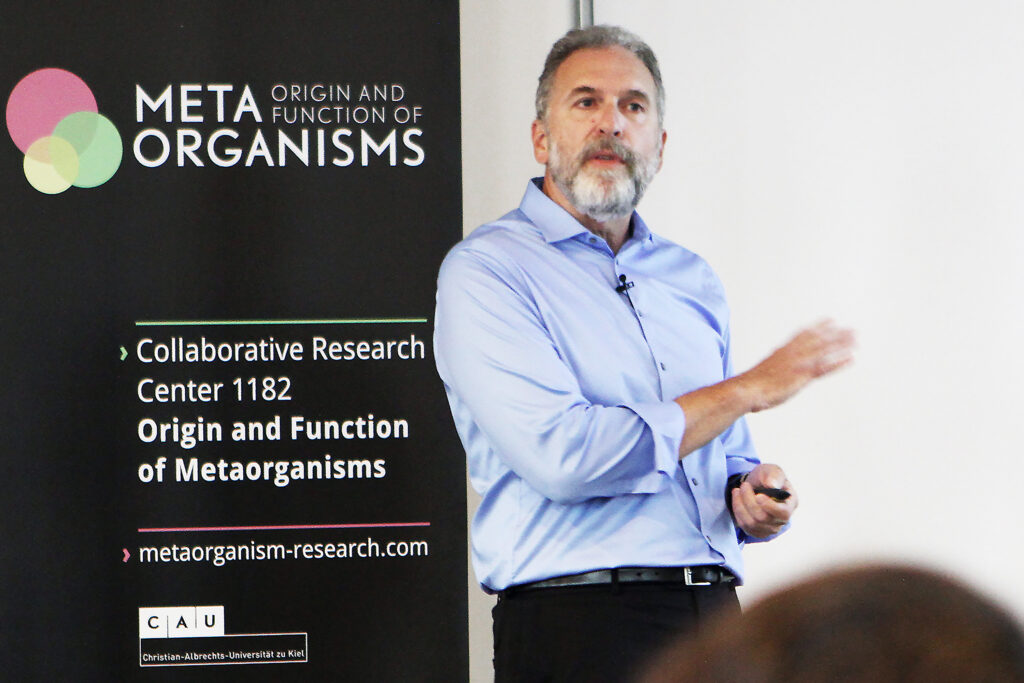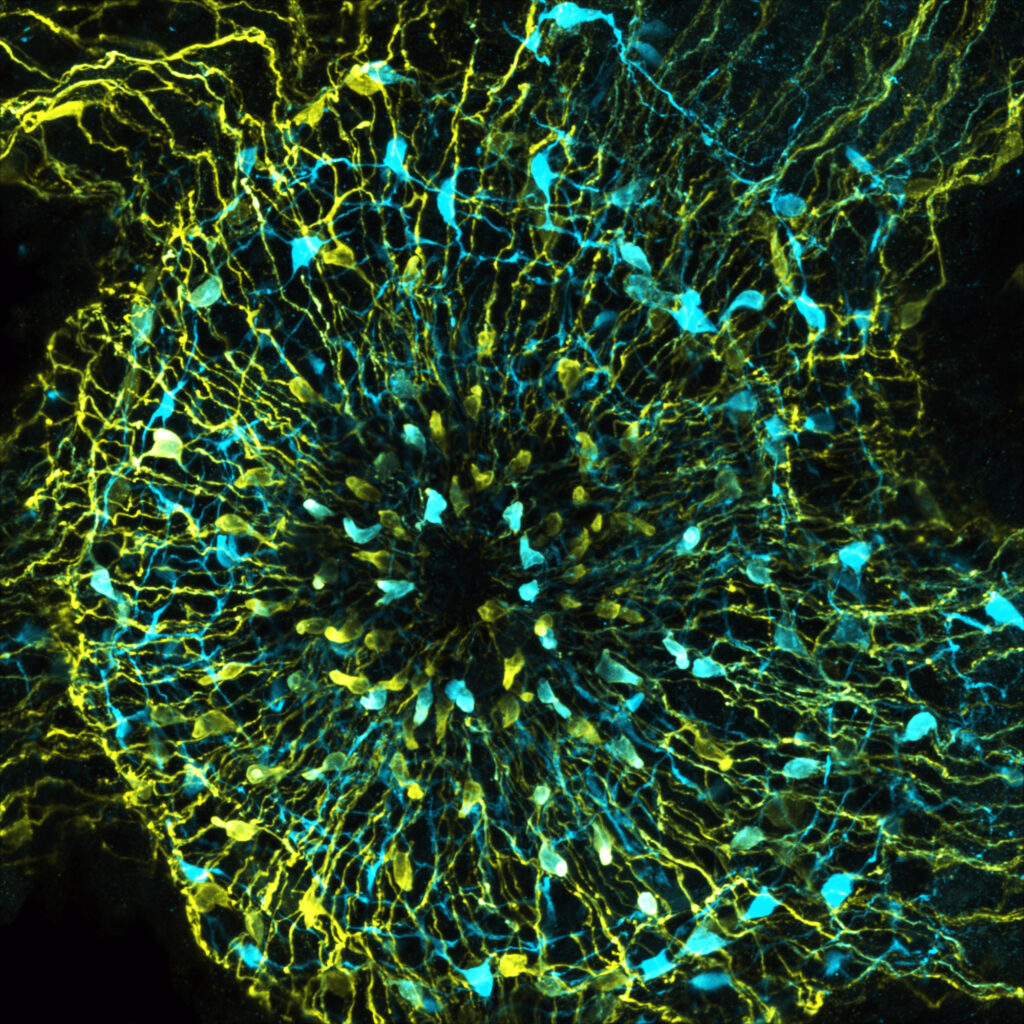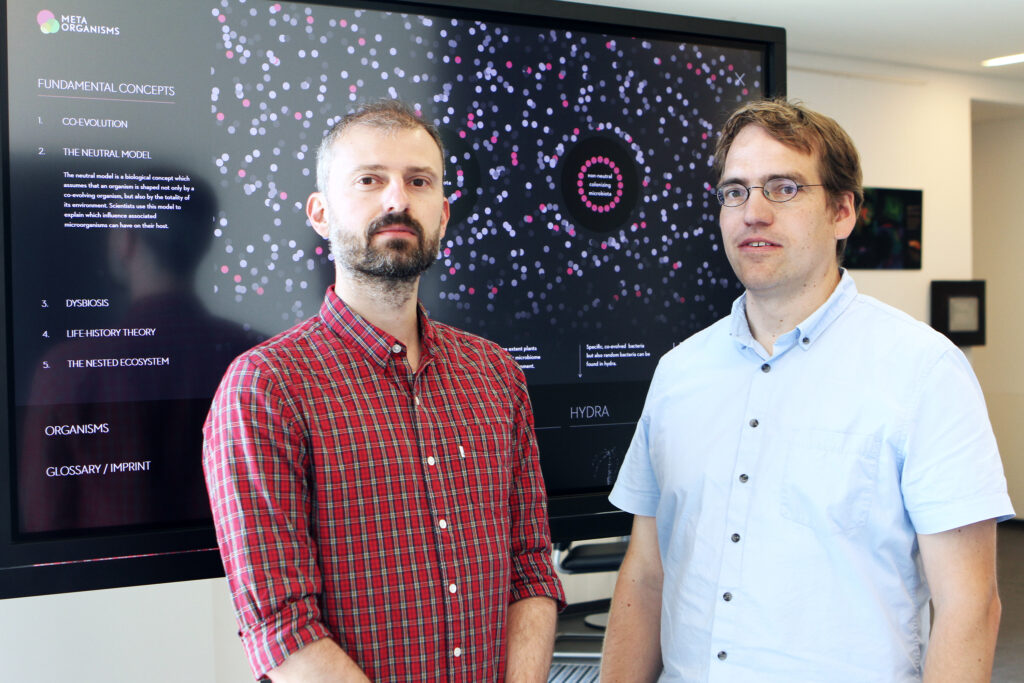Stability and dynamics of the microbiome
Researchers from Kiel University investigate basic principles of microbiome composition using roundworms as an example
Every multicellular creature in the world is colonized by an unimaginably large number of microorganisms and has evolved together with them in the history of life. The natural microbiome, i.e. the totality of these bacteria, viruses and fungi living in and on a body, is of fundamental importance for the entire organism: on the one hand, it performs vital tasks for the host organism, for example, from supporting resource utilization to protecting against pathogens. On the other hand, microbial dysbiosis is associated with various serious diseases in humans like diabetes, Crohn’s disease or other chronic inflammatory diseases. Researchers worldwide have therefore been intensively studying the highly complex interactions of host organisms and microorganisms and their involvement in central life processes for several years.
An important approach for their better understanding is the investigation of so-called model organisms. These include the nematode Caenorhabditis elegans, which is only about one millimetre long. Due to its simple organisation and short generation time, C. elegans is well suited for evolutionary biology and microbiome research. Using this example, a research team from the Evolutionary Ecology and Genetics Group at Kiel University has now published a long-term study within the framework of the Collaborative Research Centre (CRC) 1182 “Origin and Function of Metaorganisms”. It investigates the underlying factors influencing the composition of the natural intestinal microbiome of the nematode. The researchers from Kiel found out that the microbiome of the worm is strongly influenced by the microbial community of the environment and that there are strong differences between individual animals. In addition, the worm’s microbiome appears to be strongly influenced by the interactions between the microbes themselves. The results suggest that the microbiome is capable of performing the same basic functions for the host, independent of its exact composition. The researchers recently published their results in the journal Environmental Microbiology.
Individual composition of the microbiome
Researchers from the Evolutionary Ecology and Genetics group headed by Professor Hinrich Schulenburg had already presented the first systematic characterization of a natural C. elegans microbiome a few years ago. In a follow-up research project, the Kiel research team has now investigated how the composition of this microbial community assembles in the first place and how it differs from the worm’s bacterial diet, i.e. the microorganisms found in its direct environment. “The worm takes up its food and thus certain parts of its microbiome from its direct environment. In the case of our study, this was a compost heap consisting mainly of rotting biomass and hence a microbe-rich substrate,” said first author Dr Julia Johnke, scientist in the Evolutionary Ecology and Genetics group. “The environment is thus the source of the worm microbiome and, in a sense, offers a broad spectrum from which the microbiome can be assembled. However, the comparison of the microorganisms in the substrate and in the animals showed that the microbial community in each individual animal is individually composed and differs from the much more diverse microbial repertoire of the environment,” said Johnke. “The environment is the source of the worm microbiome and in a sense offers a broad spectrum from which the microbiome can be assembled”, she added. The composition of the worm microbiome is therefore subject to environmental filtering that regulates the microbial community independently from external conditions.
An ecosystem inside the body
The Kiel researchers thus concluded that, apart from a few constants, it is always different microbes that make up the natural microbiome of the individual animals. “There is not a specific single set of bacteria that helps the worm to maintain important life functions such as food conversion or infection protection,” emphasises Schulenburg, evolutionary biologist and head of the research group. “The microbiome of the nematode varies considerably from individual to individual and changes dynamically over time,” continued Schulenburg. In order to understand how a stable functioning of the microbiome is maintained despite this dynamic development, the Kiel research team studied the interactions between the microorganisms in more detail: Although the microbiome interacts with the host organism, it is at the same time strongly influenced by the interplay between the microorganisms themselves.
For example, certain species of bacteria, which prey on other bacteria, can control the density of bacteria within the microbiome. To a certain extent, this creates space for various other types of microorganisms. Overall, this can result in a high species diversity within the microbiome. “Such high diversity can potentially be beneficial for the host organism,” says postdoctoral researcher Johnke. “The high diversity can ensure a functional redundancy of the microbiome, i.e. that different bacterial species can, to a certain extent, stand in for each other and take over the same functions,” continues Johnke. In the opposite case, the increased occurrence of dominant species within the microbiome can lead to a decrease in diversity and thus have potentially negative effects on the host organism – this case, too, can presumably take place in the microbiome of the nematode.
When investigating the microbial composition and its changes over time, scientists, as in the Kiel study, apply, among other things, the principles of community ecology. They regard the microbiome as an independent ecosystem in which, for example, different species of bacteria compete with each other, basically following the same principles as, for example, wild animals that live together in a particular habitat and regulate each other in their populations. “The consideration of the nematode microbiome as an independent ecosystem is of great value because it allows us to obtain fundamental insights into the colonization dynamics and microbial composition of a living organism,” emphasises Schulenburg. “Similar to the ecosystems of the visible environment, different organisms in this microbial habitat can occupy identical niches or functions or a high species diversity can be beneficial for the stability of the entire system,” continued Schulenburg. The new results thus contribute to a better understanding of the composition and dynamics of the microbiome and the associated functional consequences for the host organism.
Original publication:
Julia Johnke Philipp Dirksen Hinrich Schulenburg (2020): Community assembly of the native C. elegans microbiome is influenced by time, substrate and individual bacterial taxa. Environmental Microbiology First published: 30 January 2020
DOI: 10.1111/1462-2920.14932
Images are available for download:
www.uni-kiel.de/de/pressemitteilungen/2020/073-johnke-env-microbio-author.jpg
Caption: Dr Julia Johnke, postdoctoral researcher in the Evolutionary Ecology and Genetics group, investigated the composition and dynamics of the worm’s natural microbiome.
© Christian Urban, Kiel University
www.uni-kiel.de/de/pressemitteilungen/2020/073-johnke-env-microbio-worms.jpg
Caption: The worm’s microbiome (bacteria highlighted in red) is strongly influenced by the environment and also differs considerably between individual animals.
© Dr Julia Johnke
www.uni-kiel.de/de/pressemitteilungen/2020/073-johnke-env-microbio-sample.JPG
Caption: The worms were sampled from rotting organic matter that features a characteristic microbial substrate but substantially deviates from the intestinal microbiomes found in the animals. © Christian Urban, Kiel University
Contact:
Prof Hinrich Schulenburg
Evolutionary Ecology and Genetics, Head
Kiel University
Phone: +49 (0) 431-880-4141
E-Mail: hschulenburg@zoologie.uni-kiel.de
Dr Julia Johnke
Evolutionary Ecology and Genetics, Kiel University
Phone: +49 (0) 431-880-4148
E-Mail: jjohnke@zoologie.uni-kiel.de
More information:
Evolutionary Ecology and Genetics, Zoological Institute, Kiel University:
www.uni-kiel.de/zoologie/evoecogen





